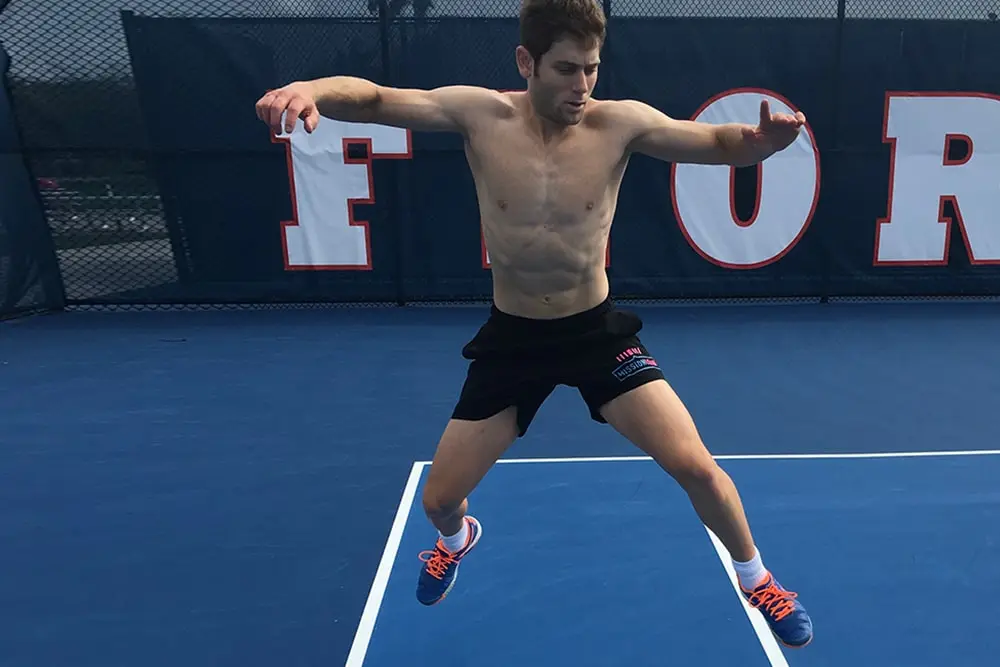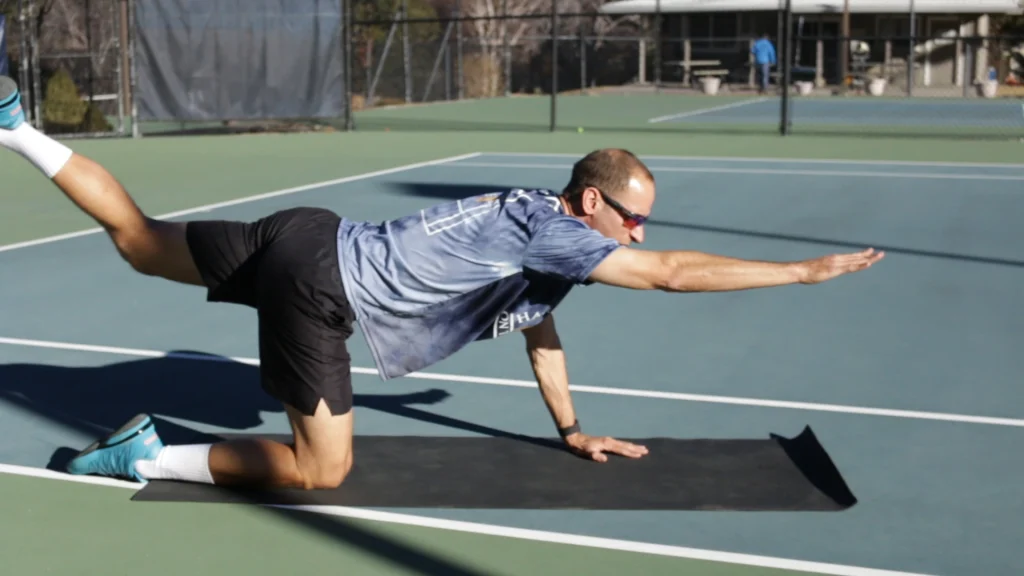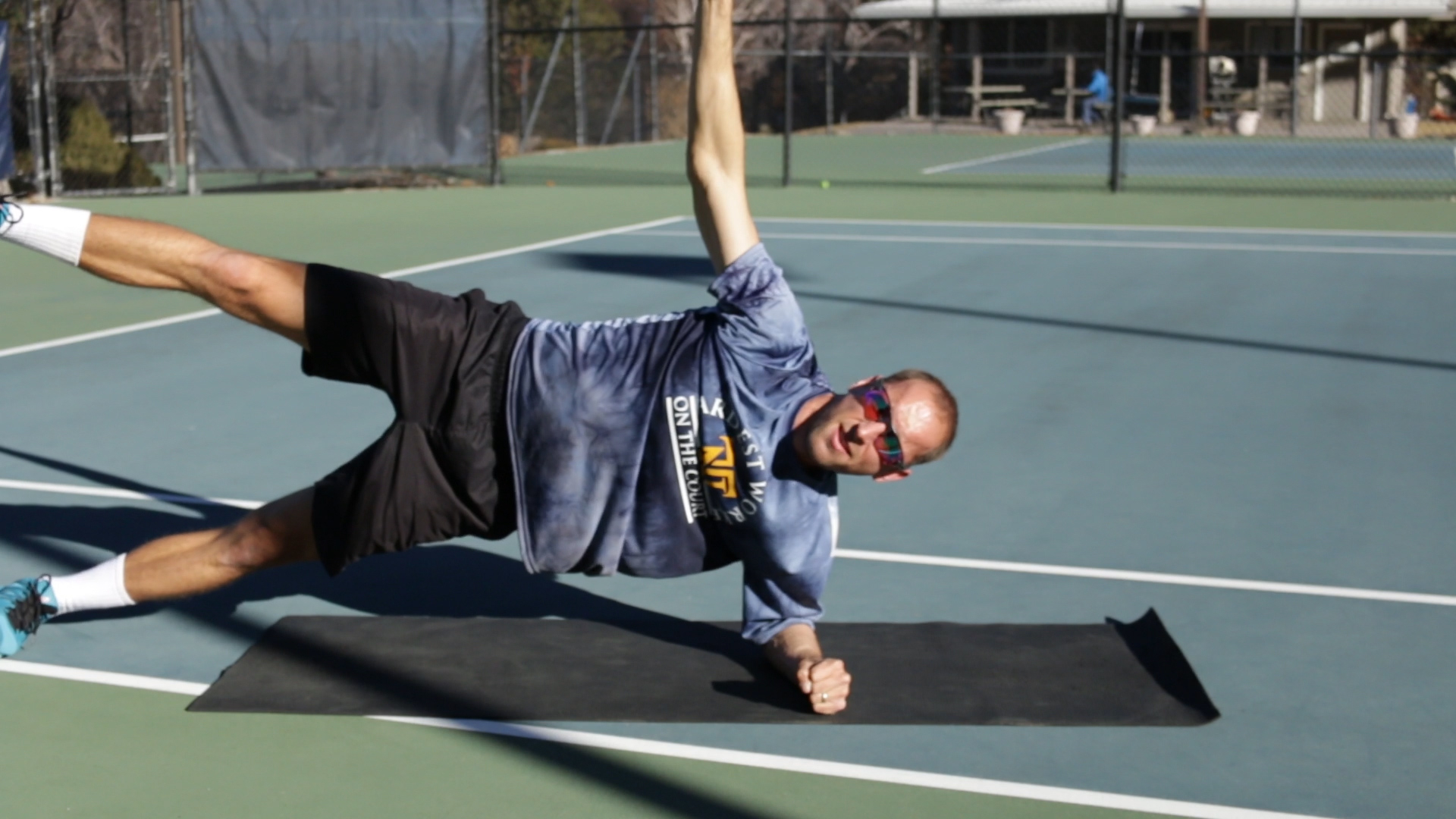Best Tennis Workouts
If you are a beginner or a seasoned player, incorporating effective workouts into your training routine can greatly enhance your performance on the court. In this article, we will explore some of the best tennis workouts that are designed to improve your strength, agility, endurance, and overall fitness.
Tennis is a physically demanding sport that requires explosive movements, quick reflexes, and sustained energy. By focusing on specific exercises, you can target the muscles and skills needed to excel in this sport.
Warm-up exercises
Here are some warm-up exercises that are fully optimized and explained in easy English:
Jumping Jacks
Stand with your feet together and arms by your sides. Jump up, spreading your legs apart and raising your arms above your head. Jump again, returning to the starting position. Repeat this motion for a set number of repetitions.
Arm Circles
Stand with your feet shoulder-width apart and extend your arms straight out to the sides. Make small circles with your arms, gradually increasing the size of the circles. After a few seconds, reverse the direction of the circles. Continue for a set number of repetitions.
High Knees
Stand with your feet hip-width apart. Lift one knee up towards your chest while hopping on the other foot. Alternate legs and continue at a brisk pace, as if you’re running in place. Aim to bring your knees as high as possible. Repeat for a set number of repetitions.
Toe Touches
Stand with your feet shoulder-width apart and arms by your sides. Bend forward at the waist, reaching your hands towards your toes. If you can’t touch your toes, reach as far as you comfortably can. Slowly return to the starting position and repeat for a set number of repetitions.
Shoulder Rolls
Stand with your feet shoulder-width apart and arms relaxed by your sides. Roll your shoulders forward in a circular motion, gradually increasing the size of the circles. After a few seconds, reverse the direction of the rolls. Continue for a set number of repetitions.

Remember to start with a gentle warm-up to gradually increase your heart rate and prepare your muscles for more intense exercise. These exercises can be modified to suit your fitness level and can be done in a small space. Enjoy your workout!
Read More: Mental Toughness In Tennis
Read More: Best Asics Tennis Shoes: Men & Women
Strength and power training
Strength and power training is a type of exercise that focuses on improving your physical strength and power. It involves performing specific exercises and movements that target your muscles and help them become stronger and more powerful.
What is strength training?
Strength training involves using resistance, such as weights or resistance bands, to challenge your muscles. This resistance helps your muscles grow stronger over time. Examples of strength training exercises include lifting weights, doing push-ups, or using weight machines at the gym.
What is power training?
Power training focuses on developing explosive strength and speed. It involves performing exercises that require quick and forceful movements, such as plyometrics (jumping exercises), medicine ball throws, or Olympic lifts like the clean and jerk.
Benefits of strength and power training:
Remember, it’s always important to listen to your body and start at a level that is appropriate for your fitness level. If you have any underlying health conditions or concerns, it’s best to consult with a healthcare professional before starting any new exercise program.
Read More: Best Tennis Shoes Under $50
Speed and agility training
Speed and agility training is a type of exercise that focuses on improving your ability to move quickly and change direction efficiently. It is commonly used by athletes in sports like soccer, basketball, and track and field, but it can benefit anyone looking to enhance their overall athleticism.
The main goal of speed training is to increase your maximum running speed. This is achieved through various exercises that target your leg muscles, such as sprints, interval training, and resistance training. By consistently challenging your body to move faster, you can improve your stride length, stride frequency, and overall running mechanics.
Agility training, on the other hand, aims to enhance your ability to change direction rapidly while maintaining balance and control. It involves exercises that focus on improving your coordination, reaction time, and body awareness. Some common agility drills include ladder drills, cone drills, and shuttle runs.
Both speed and agility training can provide numerous benefits, including:
To optimize your speed and agility training, it’s important to follow a structured program that includes a combination of exercises targeting different aspects of speed and agility. It’s also crucial to warm up properly before each session and gradually increase the intensity of your workouts over time.
Endurance training
Endurance training is a type of exercise that focuses on improving your stamina and ability to sustain physical activity for longer periods of time. It is designed to enhance your cardiovascular fitness and muscular endurance.
During endurance training, you engage in activities such as running, cycling, swimming, or any other form of aerobic exercise that elevates your heart rate and keeps it elevated for an extended period. This helps to strengthen your heart and lungs, as well as improve the efficiency of your body’s oxygen utilization.
To optimize your endurance training, it’s important to follow a few key principles:

Remember, endurance training is a gradual process, and results take time. Stay motivated, stay consistent, and enjoy the journey towards improving your endurance and overall fitness.
Core and stability exercises
Core exercises are a type of workout that focus on strengthening the muscles in your abdomen, back, and pelvis. These muscles are important for maintaining good posture, balance, and stability. By doing core exercises, you can improve your overall strength and reduce the risk of injuries.
Stability exercises, on the other hand, are designed to improve your body’s ability to maintain balance and control movement. These exercises often involve challenging your balance by standing on one leg or using unstable surfaces like a balance board or stability ball. By practicing stability exercises, you can enhance your coordination, stability, and overall body control.
Both core and stability exercises can be beneficial for people of all fitness levels. They can be done at home or in a gym, and many exercises require little to no equipment. It’s important to start with exercises that match your current fitness level and gradually increase the difficulty as you get stronger and more comfortable.

Remember to always consult with a healthcare professional or a certified fitness trainer before starting any new exercise program, especially if you have any pre-existing medical conditions or injuries.
Flexibility and mobility exercises
Flexibility and mobility exercises are movements that help improve the range of motion and flexibility in your body. These exercises can be done by anyone, regardless of age or fitness level.
Remember to start slowly and gradually increase the intensity and duration of these exercises over time. It’s important to listen to your body and not push yourself too hard. If you have any existing medical conditions or injuries, it’s best to consult with a healthcare professional before starting any new exercise routine.
Recovery and injury prevention
Recovery and injury prevention are crucial aspects of maintaining a healthy and active lifestyle. Here are some key points to consider:
Remember, everyone’s body is unique, so it’s important to tailor your approach to recovery and injury prevention based on your individual needs and goals.
Conclusion
Incorporating tennis workouts into your training routine can greatly enhance your performance on the court. By focusing on specific exercises that target the muscles used in tennis, you can improve your strength, agility, speed, and endurance.
Some of the best tennis workouts include cardio exercises like running and cycling to improve your stamina, plyometric exercises to enhance your explosive power, strength training exercises to build muscle and prevent injuries, and agility drills to improve your footwork and reaction time.











